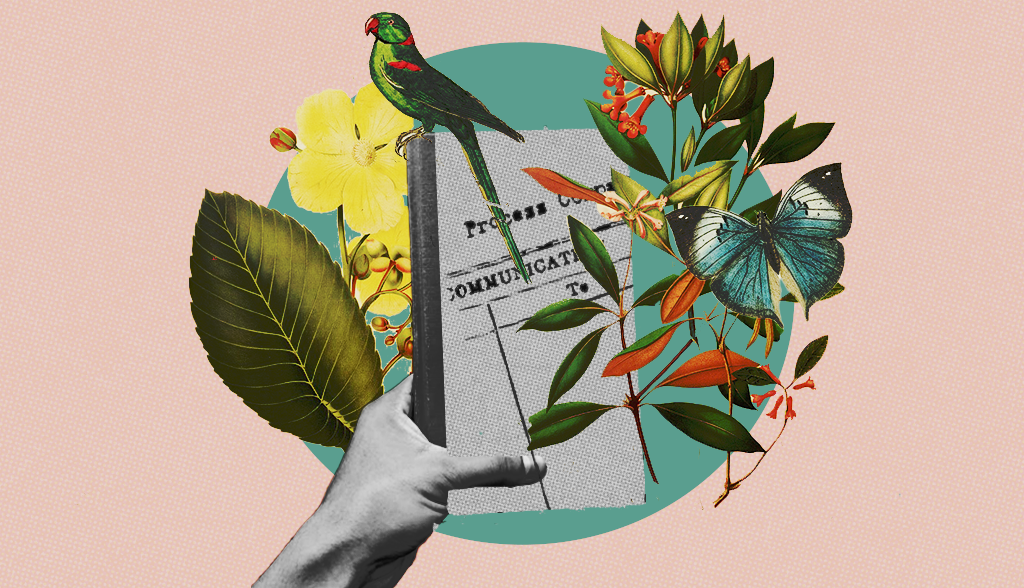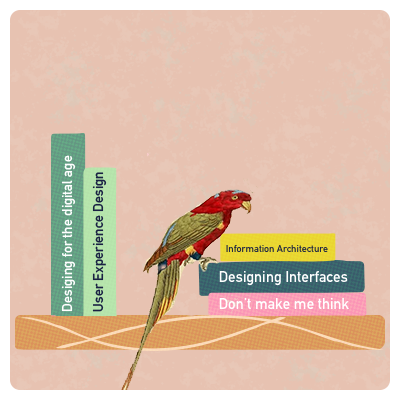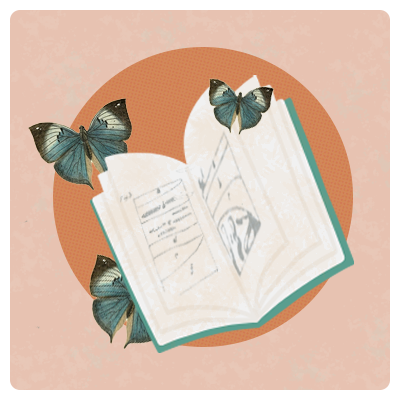Top 5 fundamental UX Design books for your bookshelf
The best UX books to help you tackle information architecture, interaction design, ux patterns, and the design process.

Design books are great resources when you get stuck on a design problem, want to refresh your knowledge, or dive into a new topic. These are my favorite books for understanding the fundamentals of UX.
I have many design books, but I don't use them all as frequently as the books on this list. I created this list by judging how often I reach for a book when I want to remember or think about something differently. These books have helped me frame ideas and processes as I've grown in my career.
For grasping and implementing a UX Design process:
1.) Designing for the Digital Age: How to Create Human-Centered Products and Services by Kim Goodwin
This is my first design book. Once I got my first job as a designer, I realized there was a lot I didn't know about design or the design process. I didn't understand all the concepts when I first bought the book, but I grew into it as my design experience developed.
The book was written from the perspective of an agency spearheaded by Alan Cooper, a giant in the field of human-computer interaction. Many concepts are specific to agency life, like having a separate visual designer from the interaction designer, which is how teams would work, as I referenced in this article.
Aside from that, the learnings I've taken from it over the years are:
• Project management for design projects
• Fundamentals of research
• Stakeholder engagement
• Developing personas
• Techniques for visualizing design
• Creating interaction design frameworks
The book's section on scenario creation and design frameworks is very valuable. I didn't even know what an interaction framework was until I was working on a big enough project. I needed this understanding, and I was glad I had this book to guide me through it.

For understanding usability:
2.) Don't Make Me Think: A Common Sense Approach to Web Usability by Steve Krug
I admit I was skeptical of this book. It was thin, with pithy subtitles in each section, and it simplified usability ideas that I wasn't sure were thorough enough. But that's the beauty of this book. Usability doesn't have to be complicated; it can be boiled down into simple ideas and principles to keep in mind when designing websites.
The core concepts of wayfinding and ensuring information isn't too hard to find are timeless when designing for the Internet. Although the book was written at the beginning of our modern Internet (and revised), the ideas are still very relevant. Promoting too many things on the home page, not providing search, and asking for information like emails too early are still problems today.
The most important learnings for me were:
• Keeping the design free of extraneous details so one doesn't have to "figure out" what to do
• Creating scannable text and less reading
• Quick and cheap usability testing
This book helped me think about design as an exercise in reducing 'extras' to prioritize the correct information.
For solving your organization's UX problems:
3.) User Experience Design: A Practical Playbook to Fuel Business Growth by Satyam Kantamneni
I recently acquired this book, and it's been handy for many tricky issues that crop up in design organizations regarding hiring, growing, and scaling a user experience practice. I've worked at many big organizations and noticed that the same problems exist everywhere. This book is packed with frameworks set up like a business canvas to handle each situation.
I recommend this book for design managers and leaders who want to connect user experience to tangible business outcomes and solve problems like driving a user experience vision and growing empathy in the organization. It's also a good primer for hiring the right design skills for your team. I've used it to establish a hiring process and a few research playbooks on recent projects.
My key learnings and playbooks I like are:
• Hiring Designers play- this framework details the difference between mediocre and awesome experience designers
• Culture Design play- this framework offers a guide on how to become a user-centered organization
• Design Problems and Opportunities play- this framework highlights the tactics of problem framing, collaboration, and using product insights to lead to proper design decisions
This book is great for designers who want to use an established framework to solve design problems. The design problem and opportunities play, for example, distills the complexity of working through ambiguity with an easy-to-understand canvas that you can use to apply to your design.

For insight into using UX design patterns:
4.) Designing Interfaces: Patterns for Effective Interaction Design by Jennifer Tidwell et al.
If you want to understand the nuts and bolts of interaction design for user interfaces, this is the book to read. UX Patterns are the foundational elements of how users interact with your website and apps. When you begin designing your first interface, you'll have questions like: Should this be a list view or a grid view? Or when I should use a button group?
UX Patterns are defined interactions that users become accustomed to, and when you break standard conventions, the usability of your experience might degrade. This book is an excellent guide to ensure you're using the patterns correctly, but it also offers general principles to consider when designing.
Key concepts I've learned from this book:
• Different navigation patterns, including hub and spoke and global navigation
• Designing the layout and communicating the interactivity of panels and windows
• Viewing examples of complex interactions like selectors and color pickers
Sometimes, examples of how others have designed something are beneficial in sparking inspiration, and there are plenty of examples to draw from. If you like video learning, you can also check out my UX design patterns course.

For navigating information architecture:
5) Information Architecture for the World Wide Web by Louis Rosenfeld & Peter Morville
Organizing information is a fundamental skill for designers, as we are tasked with figuring out the best way to lay out information so that it is easy for someone to find. I was introduced to this book when I took a course in Information Architecture while studying for a degree in Library Science. This book, also known as "The Polar Bear Book," reference the polar bear on the cover.
Some key learnings from this book that I've had over the years:
• Overview of organization systems, including differences between topical and task-oriented approaches
• The importance of labeling and having a controlled vocabulary to ensure consistency across the site (you'd be surprised at how much inconsistency exists in large websites even today)
• Creating sitemaps and blueprints to diagram content relationships
• Card sorting to discover mental models and as a method of research
This comprehensive book covers every aspect of developing an IA for a complex and content-heavy website, from user needs to executing a big IA project. I also have a design course that covers Information Architecture and design layout.
Which UX book will you pick up next?
I've read a lot of UX books, and continue to add more to my collection. But, there's a lot of perspectives I don't always agree with, and a lot of fluff. The best UX books for me are the ones that I can rely on to spark a new thought, or revisit basic fundamentals, or in general feel more like a reference book.
This year, I'm challenging myself to read more books on design, product management, research, and data analysis. I'm sure I'll have more recommendations. Let me know if you have any too!
Happy reading!
